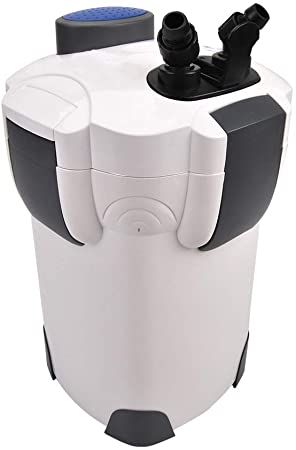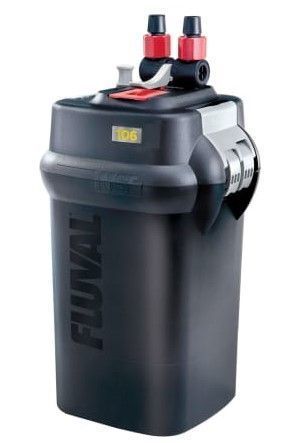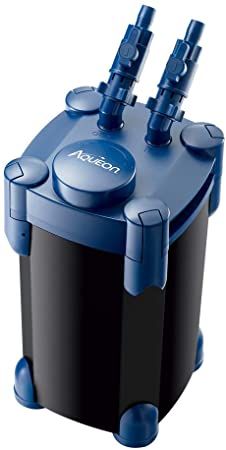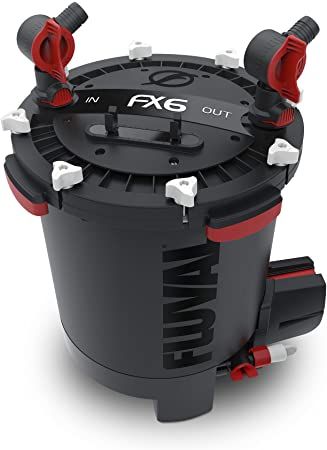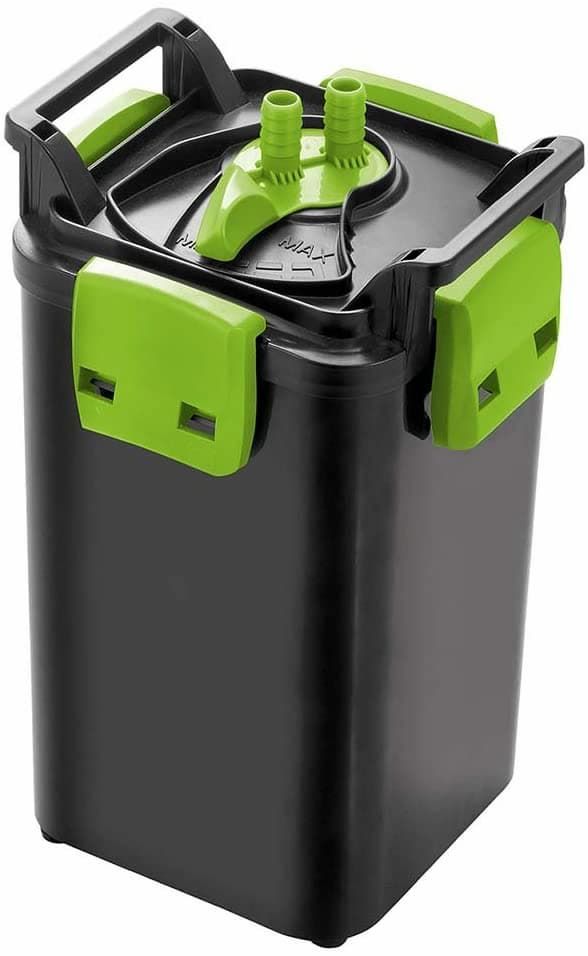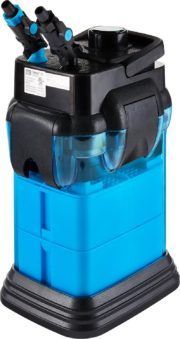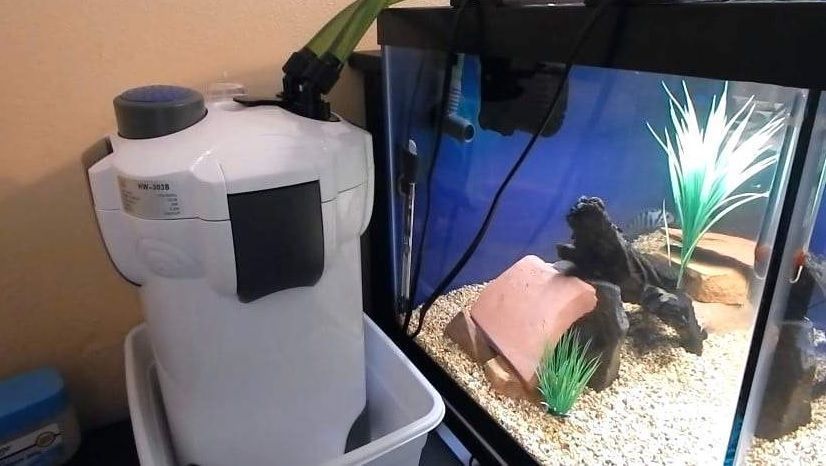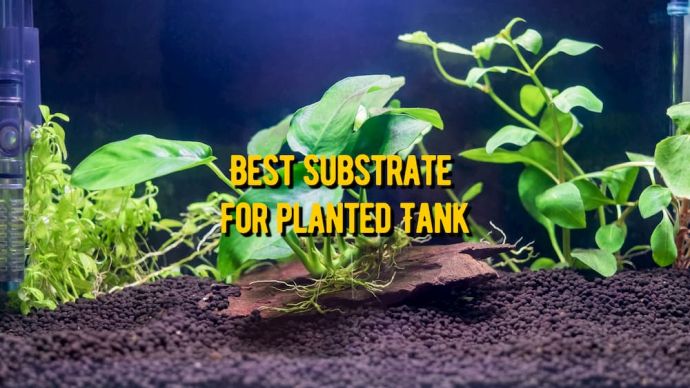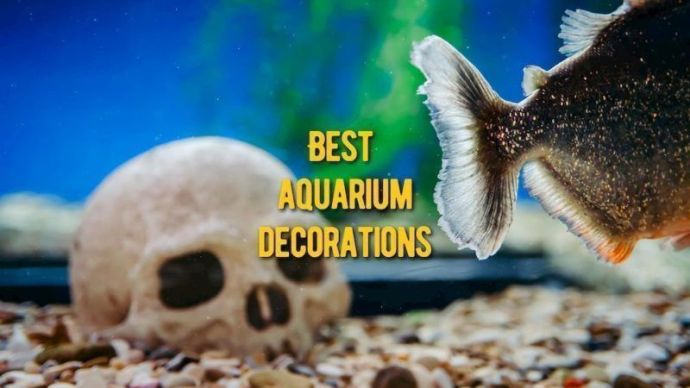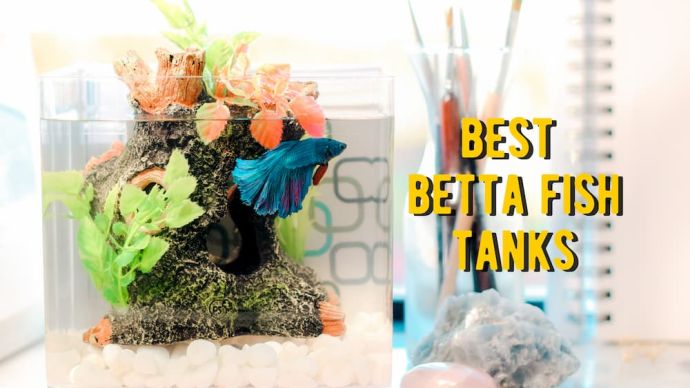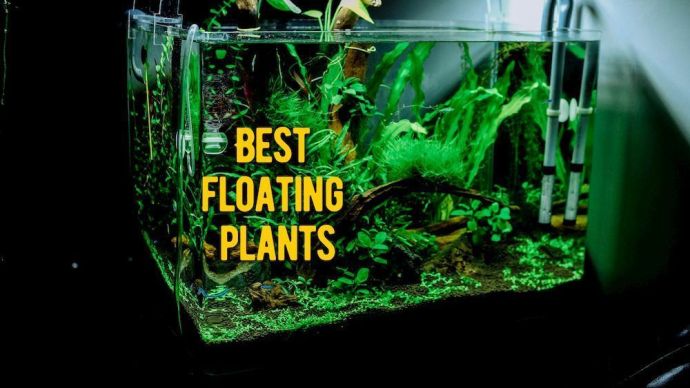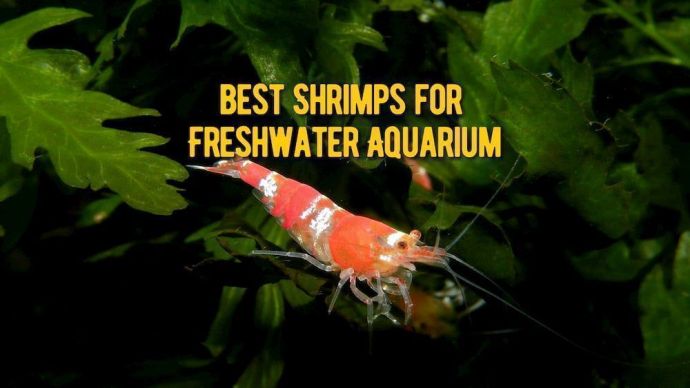The 9 Best Aquarium Canister Filters: Best Canister Filter Reviews (Updated List)
Written by:
Author: Casey Fenn
Casey Fenn has 3+ years of experience in writing content. He lives in western North Carolina with his wife, four children, and an assortment of farm animals — including a dog, twenty chickens, a handful of quail, and one milk cow. Casey specializes to write articles in Dog Care, Cat Care, and Tips for Aquarium Owners.
View all 10 articlesLearn about our editorial process and veterinary review board.
Viewed: 1570
Updated on: 01/03/2022
There are many kinds of aquarium canister filter on the market; to choose the most suitable aquarium model, you need to know about the types of filtration and the most popular types. Each canister filter has its advantages and disadvantages.
Filters are created specifically for processing these bacteria. Thus, a filter’s water purification allows for maintaining optimal living conditions for fish in the aquarium’s closed ecosystem.
The Benefits of Canister Filters for Aquariums
Any aquarium keeper will tell you there are countless advantages to buying an aquarium filter. However, you don’t have to take their word for it. Here are some of the best benefits of canister filters and why you should get one:
- High-quality filtration bespoke to your tank’s unique characteristics.
- Less maintenance needed than with other filter devices.
- Less evaporation and current due to the spray bar replenishment system.
- Complete media filter customization.
- High water flow rate ideal for tanks that need a lot of filtration.
- Easy setup process even for beginners.
- Long-lasting efficiency and low need for replacement.
- Quiet and clean operation.
- An inbuilt water pump that makes filtration easy and effective.
Additionally, it can ensure full mechanical, biological, and chemical filtration for your aquarium. This way, your fish and plants get to enjoy clean and fresh water at all times. As a result, their health remains at optimal levels and the risk of disease drops significantly.
Do You Need A Canister Filter?
As you can see, equipping your aquarium with a canister filter is awesome. But, do you actually need one? Is a canister filter right for your aquarium? Let’s find out!
Canister filters are heavy-duty filters ideal for large tanks with a large fish population. Also, they work just as well for saltwater tanks as they do for freshwater aquariums. Lastly, they function outside the tank. So, before buying one, you should ask yourself these questions:
- How large is my fish tank?
- What types of fish do I want to have in it?
- Is there enough room around the aquarium for the canister filter?
- What is my budget?
If you want to have a large, exhibition fish tank, then canister aquarium filters are ideal for you. These devices work great for African cichlids, livebearers, ovoviviparous, and more. However, they come in different sizes, and subsequently, at different costs.
The fundamental law in choosing a canister filter is – the larger the tank the bigger the filter. So, if you have a 300 liters aquarium, you will need a large and powerful canister filter. This way, the water will reach top cleanliness levels faster and maintain them longer than when using smaller-sized filters.
If you have a large fish tank and the budget for a high-performance canister filter, then buying one is a no-brainer. However, you should also consider its dimensions. Make sure that you have enough space around the aquarium to install it properly.
Parameters We Used in the Canister Filter Comparison
Browsing the market for the ideal aquarium canister filter for your fish tank may be tiresome. So, we went ahead and researched the best canister filters for you. Below, you will find various devices with their pros and cons, which will make it easier for you to choose.
Here are the main parameters we chose to determine which the best canister filter for fish tanks is:
- Design.
- Pump power.
- Internal filter media.
- Size.
- Price.
- Ease of use.
- Adaptability.
- Guarantee period.
Depending on these parameters, we assigned ratings ranging from 1 to 5 to each product for each parameter. The final calculations have recorded a maximum rating of 4.5 for an out top-rated canister filter. On the other hand, the lowest rating is 4.0 for the last position in our best canister filter review.
How to choose a canister filter for aquarium
Choosing which filter for the aquarium is better, take into account the electricity consumed by it. The best option is no more than 10 watts. Devices with a power of up to 16 watts are suitable for large volumes.
The professional external canister filter performance should be selected according to the volume of the aquarium. It is desirable that the flow rate of the liquid passing through the filter device is not less than 3 times higher than the tank capacity. So, if the volume is 50 gallons, the capacity should be at least 150 gallons/hour.
Our TOP Rated Fish Tank Canister Filters Review
We conducted in-depth research, selected and reviewed the most suitable models. You can check our detailed reviews for top canister filters with descriptions of benefits, pros, and cons below.
1. Eheim Ehm Fltr 2217 Classic Wm 264g 4.5
Eheim Classic Canister filter is some of the best and most reliable fish tank filters on the market. So, it’s no surprise we chose one of them as the top canister filter.
The Classic series functions on proven filtering technology to provide a balanced performance and highly efficient aquarium filtration. It has a one-chamber design that ensures optimal flexibility for setting up for mechanical, biological, chemical, and adsorptive filtration.
What we love most about the Eheim classic canister filter is that its flow rates have been accurately designed to ensure the ideal filtration balance. For instance, it guarantees excellent water circulation and oxygen enrichment to create a healthy environment for your fish.
Lastly, it only requires maintenance once every 3-6 months, depending on the aquarium size. So, you can go for months without inspecting it.
Key features:
- Highly reliable professional external canister filter ideal for both saltwater and freshwater tanks.
- It works with fish tanks up to 160 gallons.
- Product Dimensions: 11 x 8.07 x 15.75 inches; 14.3 Pounds.
- Equipped with a Permo-Elastic Silicone Sealing Ring.
- It comes with filter sponges and loose filter media.
Pros
Cons
- It is clean, simple, and easy to service.
- Excellent mechanical and biological long-term filtration.
- It requires very few maintenance inspections throughout the year.
- It comes with a 24-month safety guarantee.
- None
2. Polar Aurora 4-Stage External Canister Filter
For years, Polar Aurora canister filters have been seen as a brand that consumers can trust. They’re known for offering high-capacity media storage, powerful pumps, and innovations that go above and beyond the competition. And this 4-stage filter puts all of those qualities on display, making it one of the best on the market.
If you’re looking for an external filter that is highly effective and budget-friendly, look no further than this product. It’s top-quality at a reasonable price.
Key Features:
- 525GPH pump allows it to be effectively used for tanks up to 200 gallons (0.76 m³).
- Includes four media trays for maximum mechanical, chemical, and biological filtration.
- Built-in UV sterilizer keeps algae and unhealthy bacteria at bay.
- Simple design of best canister filter makes it easy to use and maintain.
Pros
Cons
- It includes a 525GPH pump that allows it to be effectively used solo with tanks up to 200 gallons (0.76 m³).
- A built-in UV sterilizer ensures that your tank’s water remains free from unhealthy bacteria, algae, and other unwelcome microscopic organisms.
- Enjoy comprehensive filtration — including mechanical, chemical, and biological — thanks to its high-capacity, customizable media storage trays.
- If this unit is too much, you can find similar units for 75-gallon tanks and 100-gallon aquariums.
- Some consumers have complained about this unit being too loud.
- Parts are constructed from relatively thin plastic, which has been known to become brittle and break over time.
3. Fluval 106 External Canister Filter
Over the past several years, Fluval has gained quite the reputation for creating best canister filters that offer great filtration, minimal maintenance, and a quieter operation than many of its competitors.
All of those things (and more) describe this model. Not only is it a powerful system that can be used with tanks up to 30 gallons (0.11 m³), it’s 15% quieter than its predecessor. It may be small, but it’s highly effective.
Key Features:
- Simple design of best canister filter makes this one of the easiest canister filters to set up and maintain.
- Up to 15% quieter than its predecessor, the Fluval 305.
- Will effectively clean saltwater and freshwater tanks up to 25 gallons.
- Clog-proof intake strainer and dual-layer foam screen minimize the maintenance frequency.
Pros
Cons
- Its simple design of best canister filter makes this one of the easiest on the market to set up and maintain.
- It’s up to 15% quieter than its predecessor, the Fluval 305.
- A clog-proof intake strainer and dual layer foam screen minimize maintenance frequency.
- Some users have complained that it isn’t quite powerful enough to maintain a 30 gallon (0.11 m³) tank — even when it’s just housing goldfish.
- Some consumers have complained about leaks.
4. Aqueon Quietflow Canister Filter
Whether you’re looking for a quality best canister filter to use in a marine aquarium or a freshwater tank, this product is a great option. It comes preloaded with filtration media that will filter your water biologically, chemically, and mechanically, eliminating waste, harmful bacteria, and toxins. And it will do it all with little more than a low hum.
Key Features:
- Offers a 200GPH pump that’s perfect for 55 gallon (0.21 m³) or fewer tanks.
- Includes three media baskets and preloaded media, including carbon, coarse foam, bio balls, and bio-ceramic rings.
- Choose between traditional water return options (spray bar or water director) or a one-of-a-kind water polishing unit that hooks to the back of the aquarium.
Pros
Cons
- This filtration system includes a 200GPH pump that works perfectly with 55-gallon tanks (and less).
- You won’t have to worry about finding filtration media when you purchase this tank. It comes preloaded with several media that will get you up and running right out of the box.
- Some water return options are available, including traditional methods as well as a water polishing unit that hooks to the back of your tank.
- Aqueon offers several other, more powerful options if you have a 75-gallon tank or a 100-150 gallon (0.57 m³) aquarium.
- Fluval offers several other less-powerful units that include many of the features of this one.
5. Eheim Classic Canister Filter
The Eheim Classic Canister Filter is named well. It provides that classic and dependable Eheim filtration without the bells and whistles that more expensive units offer. But that’s not a knock on this unit at all.
Sometimes, you don’t need another “smart” feature, you just want something that will give you the biological and mechanical filtration you need while keeping your tank water circulating. And that’s what this unit offers. It gets the job done. So, if that’s what you’re looking for… you’ve found it.
Key Features:
- Offers high-quality mechanical and biological filtration along with continual water circulation and oxygen enrichment.
- Includes everything you need to get started, right out of the box — including media, valves, hoses, and more.
- Permo-elastic silicone ring ensures the pump headed is always sealed correctly after cleaning.
Pros
Cons
- This best canister filter offers high-quality mechanical and biological filtration along with continual water circulation and oxygen enrichment.
- It includes everything you need to get started, right out of the box — including media, valves, hoses, and more.
- It features a permo-elastic silicone ring that ensures the pump headed is always sealed correctly after cleaning.
- Eheim offers this unit in 40 gallon (0.15 m³), 66 gallon (0.25 m³), and 92 gallon (0.35 m³) models.
- Some users have had issues with units with broken shafts, clips, etc., right out of the box.
- Some consumers have complained about leaks.
6. Fluval FX6 Canister Filter
If you’re looking for a true powerhouse, you’ve found it. Fluval canister filter is a professional-grade filter that includes all the bells and whistles you’d expect from an MSRP product.
And not only does it use the latest technology to offer self-starting action, a smart pump, and extra-large media trays, it can be used with tanks up to 400 gallons (1.51 m³)! If you want the best of the best (and are willing to pay for it), you can’t go wrong with the Fluval FX6.
Key Features:
- Powerful 925GPH pump of the best canister filter enables this filter to be used in tanks up to 400 gallons (1.51 m³).
- Advanced monitoring system maintains peak pump performance at all times.
- Includes top-quality media that provides consistent mechanical, chemical, and biological filter media.
- Automation systems make it a snap to start and maintain.
Pros
Cons
- Includes an incredible 925GPH pump that will allow you to effectively filter water in tanks up to 400 gallons (1.51 m³)!
- Offers high-capacity (1.5 gallons (5.68 l)) media trays that can be customized to your needs and desires, giving you the exact filtration you want.
- Fluval offers several other less-powerful units that include many of the features of this one.
- None.
7. Hydor Professional External Canister Filter 4.20
This external filter is way down on our list, but we still consider it a top competitor. It features high filtration standards and a premium pump together with telescope intake tubes, easy priming, and safety locks. Simply put, when you buy it, you get an entire ecosystem in a box.
Additionally, the Hydor professional external canister 250 comes with an intelligent design that makes it easy to install. Also, it occupies very little space, especially if you place it under a high-stand aquarium.
Key Features:
- It can operate with gallon ranges from 40 to 75.
- The filter circulation stems 200 gallons.
- The filter volume is 5 liters.
- The pump output ranges from 190 GPH to 350 GPH.
- It has 3 internal filter media.
Pros
Cons
- Easy to set up.
- It provides optimal filtration process, versatility for both freshwater and saltwater aquariums.
- Hydor professional canister filter comes with a coarse black filter sponge.
- It includes Sintered quartz BIO-rings.
- Spray bar Attachment included.
- Some customers have complained that the spray bar is not as silent as the manufacturer advertises it to be.
8. Cobalt Aquatics EXT Canister Filter 4.1
If you are looking for a medium-range canister filter with low maintenance demands, you don’t have to look any further. The Cobalt Aquatics E-X-T aquarium canister filter is a highly flexible device that works equally effectively for fish tanks, terrariums, and even for vivarium setups.
It comes with an innovative valve with 5/8″ hose barbs that allow the pump to function and maintain optimal circulation to your tank even when you disconnect it. More so, the user-friendly design makes it easy to take apart and put back together with no hassle.
Key Features:
- No priming necessary as it does not need gravity-induced flow. It can sit below, beside, or above your tank.
- Product Dimensions: 8.25 x 8.25 x 12.5 inches; 6 Pounds
- Ideal filtration process for up to 20 gallons of water.
- It comes with a 3-year guarantee.
Pros
Cons
- Very affordable.
- Low-maintenance.
- Ideal for beginners.
- Quick setup.
- Some customers have complained that the plastic material is not sturdy enough and potentially susceptible to breakage.
9. Penn Plax Cascade Canister Filter 4.0
Penn Plax Cascade aquarium filter is known for being one of the top brands globally, and this product is no different. It offers everything you could want out of a quality system, including large capacity media trays that can easily be swapped out and cleaned, a simple primer button, 360-degree valves for hard-to-reach places, and numerous accessories.
And perhaps the best thing of all is that they offer these features in five different models that can be used in 30 gallons (0.11 m³), 65 gallons (0.25 m³), 100 gallons (0.38 m³), 150 gallons (0.57 m³), and 200-gallon tanks, respectively.
Key Features:
- Sturdy external filter that can be used with saltwater and freshwater aquariums up to 100 gallons (0.38 m³).
- Handy 360-degree rotating flow valves for the tightest fits.
- Take advantage of extra-large stackable media trays that accept a variety of options, including bio-floss, bio-sponge, bio-rings, and more.
- Push-button primer and user-friendly design make it easy to set up, run, and maintain.
Pros
Cons
- This is a sturdy external filter that can easily be used in marine or freshwater tanks up to 100 gallons (0.38 m³).
- The extra-large, stackable media trays give you the ability to use numerous media, including bio-floss, bio-sponge, bio-rings, and more.
- It includes 360-degree valves and a push-button primer, making it one of the most convenient brands.
- No matter the size of your tank.
- None.
READ MORE: TOP Rated Fish Tanks
Types of Canister Filters and filter media
- Electric. Have many modifications that can solve any problem in both amateur and professional aquarists. This group’s advantages include high performance, versatility (can provide all types of filtration), and a wide range of applications (available for all kinds of aquariums). They are divided into internal and external; i.e., they are located inside the aquarium or outside.
- Air. Have a simple design, low cost, and low energy consumption; however, they perform poorly and are not recommended for large aquariums. These filters are located exclusively inside aquariums.
Main Filtration Methods
- Mechanical filtration. Water is cleaned from stable suspensions (mud from the new soil, fish excrement, pieces of dead leaves, uneaten food remnants, etc.) using porous materials. The quality criterion for mechanical filtration is water transparency.
- Biological Filtration. Water is purified from toxic nitrogen compounds (ammonia, ammonium, nitrites) during a fish’s life. Hazardous substances are processed by useful bacteria that naturally inhabit the filter materials or select carriers provided in the filtration system.
- Chemical Filtration. Purifies water from organic compounds, such as ammonia, methane, and hydrogen sulfide. Cleaning is based on a chemical reaction between organic compounds and special fillers (activated carbon, zeolite, phosphate scavengers) in the filter material.
It is worth noting that even the most detailed filters (electric or air) carry out two types of filtration — mechanical and biological. More expensive filters can perform three filtration methods at once.
READ MORE: How to Take Care of a Freshwater Fish Tank
FAQs in Choosing Good Canister Filter
👉 How does a canister filter work?
Canister filters work by pumping water out of your aquarium, into a canister, and through various filtration media. Once the water has been filtered, it’s routed through another hose back into the tank. Since canister filters are generally more extensive and more powerful than internal, they’re often stored in the stand underneath the aquarium to minimize noise and save space. Pumping water through an external filter offers several benefits, including…
- Removing particulate matter and debris more effectively.
- Requiring less of a mess to clean and maintain.
- Working with larger tanks, even up to and beyond 125-gallon aquariums.
- Offering greater flexibility allows you to mix and match various kinds of filtration media, enabling you to achieve comprehensive chemical, biological, and mechanical filtration.
🐟 How to set up a canister filter for an aquarium?
A canister filter is a great option, no matter how large or small your aquarium is. Whether you have a 20-gallon tank with a handful of goldfish or a 100-gallon aquarium housing a family of turtles, you can take advantage of the many benefits of a canister filter. And one of the best things about them is that they’re so easy to set up!
Once you’ve got your tank and filter unboxed and ready for setup, you’ll want to begin by getting everything situated where you’ll want it to stay. The last thing you’ll want to do is get everything set up and filled with water, only to realize that you really wanted to have it on the other side of your bedroom. Once you’ve got everything in its proper place, you’ll need to remove any media baskets from your filter and ensure that they are filled with the kind of media you want to use. Generally, you’ll need to install any mechanical media in the first try, biological media in the second tray, and chemical media in the third (and fourth, if it’s available) tray.
After your media’s been properly installed, you’ll want to follow the instructions for preparing the intake hose according to your filter’s instructions. Then, you’ll prepare the output. Both of these processes should be similar to each other.
Once everything is in place, you’ll need to turn your filter on and prime it if necessary. Before long, you should see water running through the filter and back into the aquarium. Keep an eye on it for several hours to ensure no mechanical or other issues arise. It’s normal for it to slightly rattle or make other noises when it’s getting started; however, these should die down after it gets going.
💡 How to prime a canister filter?
The way to prime is generally going to vary depending on your filtration system’s brand and model. However, priming most modern canister filters is as simple as holding down or repeatedly pushing the priming button.
If this doesn’t work, there are several workarounds, depending on your system. For example, you may want to take the intake hose out of the tank and pour some water down it into the filter. This may be enough to get the pump working hard enough to begin pulling water from the tank after you replace the hose. If you can’t seem to get it to prime, you may want to look at the manual that came with your filter or call the manufacturer’s helpline.
🐡 How often does a Canister Filter need to be cleaned?
Your canister filter keeps the water in your tank fresh and clean. If it gets dirty or clogged up, your fish’s water will inevitably begin to stagnate and even stink. You should use canister filters in any type of aquarium:
- in fresh;
- water in the aquarium for plants;
- in the saltwater aquarium;
- in the aquarium for corals.
So, cleaning and maintaining your canister filter is a necessity for the health of your fish and the cleanliness of your home. But how often should you clean it?
It’s good to get in the habit of cleaning at least once every six to eight weeks. However, you should also be on the lookout for signs that you may need to clean it sooner. For example…
- Has the water in your aquarium become cloudy or started giving off a foul odor?
- Have you tested your water and found that it’s high in nitrates?
- Do you find your canister filter getting clogged more and more often?
- Do you see particulate matter and other debris floating throughout the water?
If you can answer “Yes” to any of the above questions, there’s a good chance that you should clean your filter, even if you haven’t reached the six-week mark.
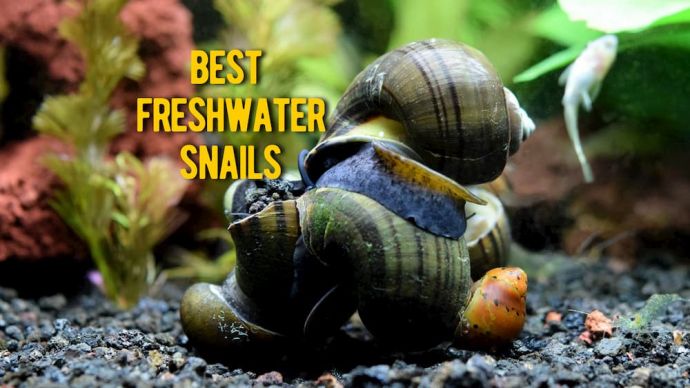 Fish and Aquarium Reviews The Best Aquarium Snails: Freshwater Aquarium Snails Review
Fish and Aquarium Reviews The Best Aquarium Snails: Freshwater Aquarium Snails Review - 391
- 0
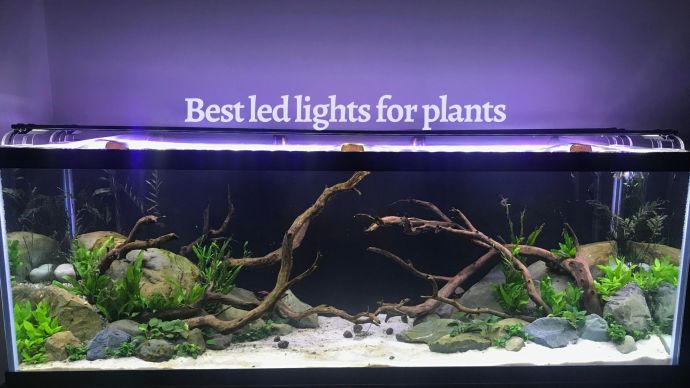 Fish and Aquarium Reviews The 10 Best LED Aquarium Lighting for Plants (Review)
Fish and Aquarium Reviews The 10 Best LED Aquarium Lighting for Plants (Review) - 1941
- 4
 Dog Products & Toys Reviews The 10 Best Brush for Australian Shepherd: Review and Buying Guide
Dog Products & Toys Reviews The 10 Best Brush for Australian Shepherd: Review and Buying Guide - 13353
- 0












